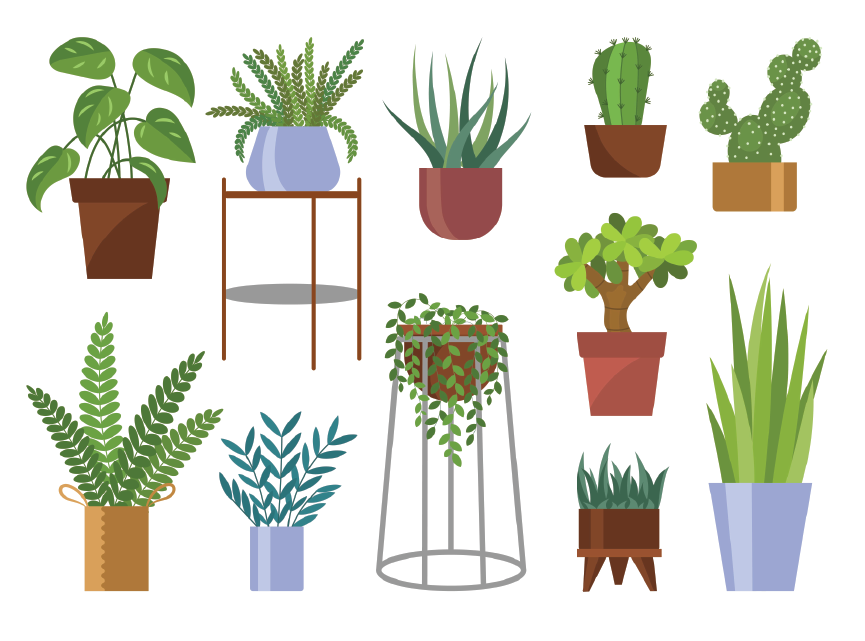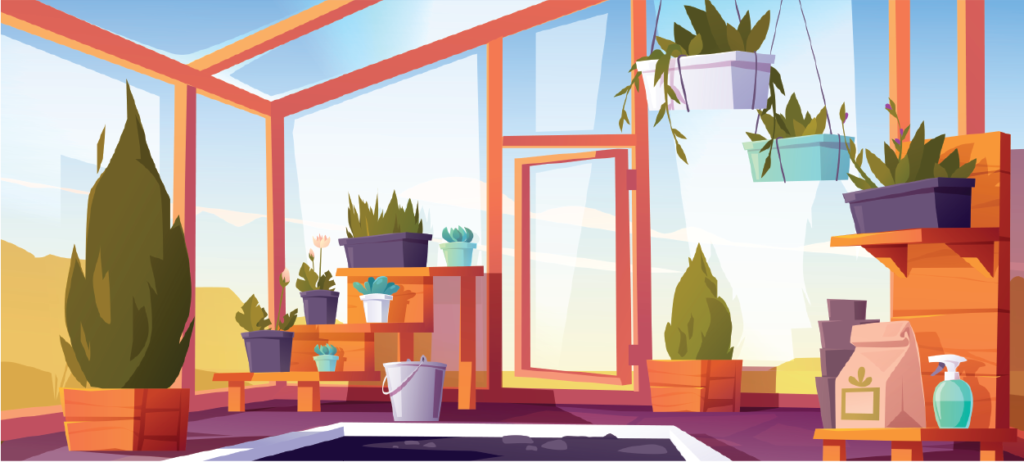Indoor greening
Transform your classroom into a green oasis

The planting of indoor spaces is important, as pupils spend most of their school day there. On the one hand, the plants serve as pollutant filters and oxygen producers, which has a positive effect on the concentration and health of the pupils. On the other hand, plants regulate the humidity content of the indoor air. Especially in new school buildings, it is often quite dry due to the well-insulated walls, and children, young people and teachers complain about their mucous membranes drying out. The use of plants improves this enormously. In addition, the classrooms can be upgraded and designed together through the addition of green planting.
BENEFITS FOR GREEN COOL SCHOOLS

- Ideas for greening your classroom in a joint activity with the pupils
- Enhance the indoor climate and air quality in the classroom with plants
- Pupils learn how to care for the plants in a joint effort and taking on the responsibility for their plants in the classroom
- Create a visible outcome with your greening project and by that set an example at your school as well as for other schools (communicate it!)
Options for greening and planting
The rooms can be simply equipped with potted plants or with interior wall planting. In addition, hanging options can be considered. It should be noted that the use of two or three plants does not result in any noticeable changes. More than 15 plants should be placed in the classroom, at least five of which should have a height of over 1.50 metres, to create an optimal room climate. When choosing plants, make sure that they are neither poisonous nor have hallucinogenic effects. Plants with thorns should also be avoided to prevent injuries. Since the care of the plants is to be taken over by the children and young people, it is advisable to choose plants that are easy to care for. Plants should be chosen that can be placed in a semi-shady to shady location, as they should not be placed directly by the window, so as not to restrict the ventilation of the classroom.

DID YOU KNOW?

What influence does the colour green have on us?
In today´s vernacular, the colour green stands for hope, growth and life. In psychology, it is said that the colour green stimulates the imagination and lets the soul swing; it also promotes creativity and stimulates the desire for new things.
What is the optimal relative humidity in a room for us humans?
The optimal relative humidity for us humans in rooms is 45 to 50 percent.
Pollutant filtering functions of plants
All plants have the ability to filter pollutants from our air. However, plants that are specifically suited to certain pollutants can also be used in the classroom, e.g., the peace lilies (Spathiphyllum) can be used to filter acetone from the classroom. Pothos / devil’s ivy (Epipremnum) can filter outgassing from paints and adhesives. Ray aralia / amate (Schefflera) and dragon tree (Dracaena) filter outgassing pollutants from curtains, chipboard and the like.

Effects of a high CO2 concentration
As the CO2 content in a room increases, fatigue, lack of concentration and discomfort increase. The smells that we humans emit last longer in rooms with high CO2 levels. Scientists have also discovered that the concentration of germs increases in percentage with the CO2 level, thus increasing the risk of infection. CO2 can be used as an indicator for indoor air quality.
TIP

Improving the air in the classroom
- The classroom should be cleaned regularly to keep dust levels as low as possible.
- At least three times a week, the floor, chairs and tables in the classroom should be damp cleaned.
- A ventilation break should be taken every hour to reduce the concentration of pollutants and to ensure an adequate supply of fresh air. It is important to ventilate intermittently and not just briefly tilt the windows.
- For the summer, it is important that the windows are equipped with appropriate sun protection to avoid excessive heat.
Positive properties of indoor plants
Studies have shown that well-being in rooms is increased by plants. Complaints such as headaches, fatigue and skin irritations are reduced. Studies in classrooms, e.g., by Nancy M. Wells (2000), show that pupils in rooms containing plants learn with much more concentration and are sick less often than in classrooms without plants. Measurements have also shown that plants lower blood pressure and reduce stress factors such as anxiety, anger, and dejection. Plants also provide higher humidity in rooms, as more than 90 per cent of the water that is watered is evaporated. Especially in the cold winter months, when the indoor air is additionally dried out using radiators, we humans benefit from the evaporation capacity of plants, as it protects against dried out mucous membranes, dry skin and burning eyes. For this purpose, plants that do not stop growing in the winter months and have a high-water requirement are mainly suitable. Caution is advised, however, as mould growth is promoted in buildings with a humidity level of more than 60 percent. A Norwegian study by Tove Fjeld (2000) investigated the influence of indoor greenery on the health and well-being of employees and students indoors and concluded that plants have a consistently positive influence, which can be attributed, among other things, to their ability to filter pollutants and to increase humidity levels indoors as well as to a noticeably faster reduction of stress just by looking at plants.

OPPORTUNITIES TO DEEPEN THE TOPIC ACROSS DISCIPLINES

As an interdisciplinary consolidation you can work on the following questions with the pupils:
In what ways can a classroom be greened?
- Develop ideas for greening their own classroom. Present the ideas in drawings and plans for the classroom.
Why is it important to green a classroom?
- Pupils research together suitable plants for the greening of the classroom or other rooms in the school. They develop different classification categories such as light or dark locations, care requirements, origin, characteristics, etc. and assign the plants according to the categories.
How can the air in the classroom be improved?
- Pupils draw up a list to create good air in the classroom. From this list, tasks are derived, distributed and taken over by the pupils (e.g., weekly rotation).

Experiments
Experiment: Greening your classroom
Greening up your classroom In this exercise, the classroom is to be greened and enhanced by numerous plants. The plants are chosen together, placed in the class, planted and cared for. LEARNING GOALS Pupils will be able to: develop ideas…


